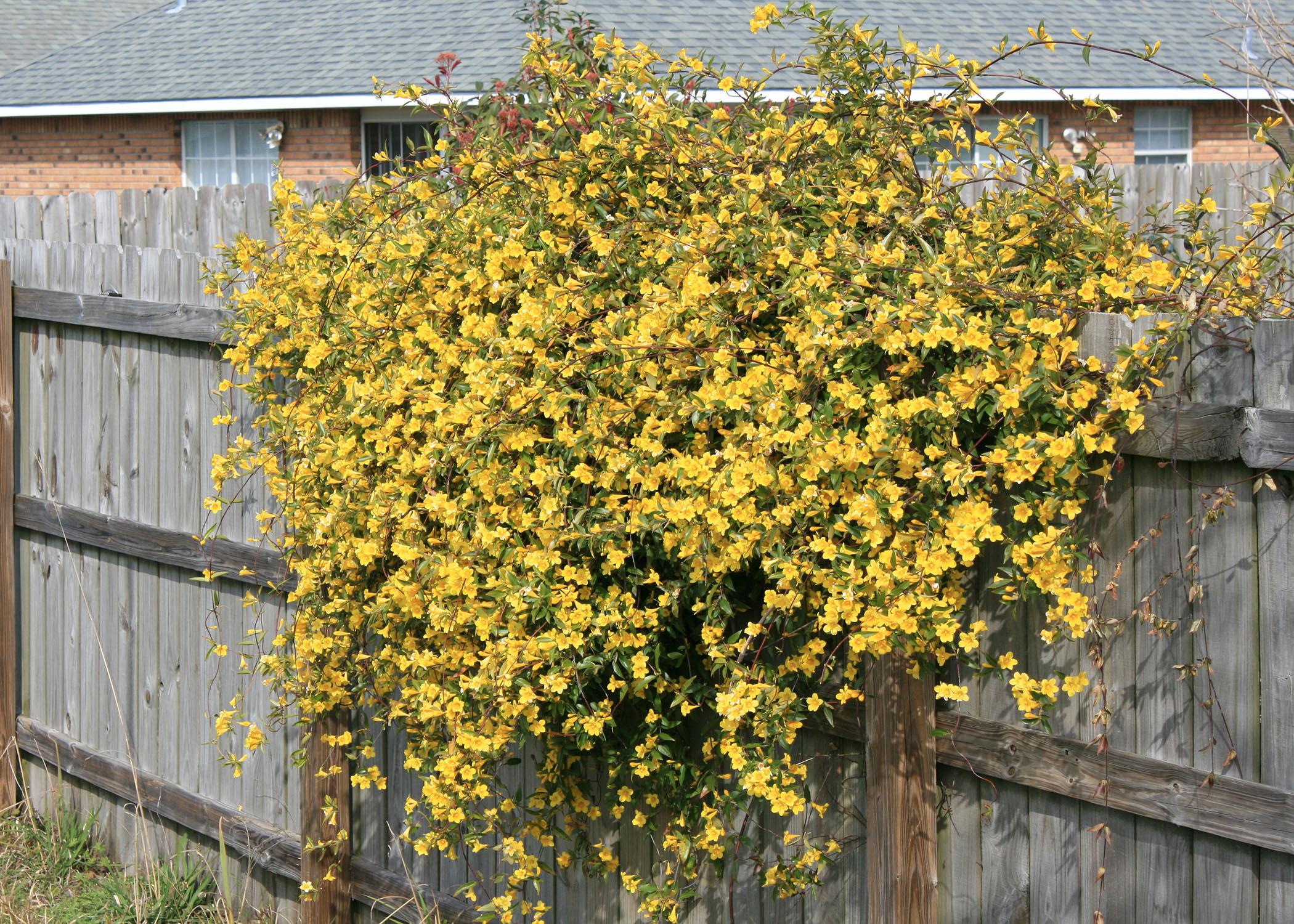Information Possibly Outdated
The information presented on this page was originally released on March 11, 2013. It may not be outdated, but please search our site for more current information. If you plan to quote or reference this information in a publication, please check with the Extension specialist or author before proceeding.
Yellow jasmine brightens yards as a ground cover, in containers
According to the calendar, we are just a few days away from the official start of the spring season. But if you have been watching the garden and landscape like I have, you’ve seen signs of spring for at least several weeks. The plants are starting to wake up.
Yellow jasmine is one of the most reliable early signs of spring and is native all over the Southeast. While you’re driving along the roads and highways in Mississippi, you can see yellow jasmine showing off its vivid blooms.
And show off it does, as the plant seemingly grows up and over almost anything that will support its vine-like growth habit.
Maybe that is why most homeowners are surprised or even shocked when I recommend yellow jasmine as a low-maintenance ground-cover plant. The response I usually get is, “I don’t want that plant taking over my yard!”
Here’s the thing: when grown in a shady location, yellow jasmine will become the unruly scrambling plant we see at the edge of the woods. While the plant appears to be out of control, in reality it is just trying to find better light in which to grow.
The benefits of this search for better light are readily observed when it is grown in full sun -- yellow jasmine becomes a well-behaved plant that is perfect for a ground cover.
This plant also can be trained to form an evergreen, dense and compact climber for a sunny trellis. It only takes a couple of seasons to have a nicely covered trellis. This is perfect for bringing the beautiful flowers up to eye-level for a closer examination.
Yellow jasmine displays its bright, clear yellow flowers in clusters, and it is easy to see how the plant got its common name. Botanically speaking, yellow jasmine is Gelsemium sempervirens. The individual flowers are funnel shaped and have the potential to be more than one inch in length and diameter. On calm days, you’ll enjoy their sweet fragrance.
The plant’s evergreen foliage is narrow, oblong shaped and a dark glossy green. Each of the leaves ends with a slender pointed tip. The leaves are paired opposite each other on the sienna brown stems.
When grown in the full sun, the branches and stems grow into tight jumbles that are hidden by the foliage. In part to full shade, these stems are more apparent and have a wiry appearance.
In addition to being a good selection as a full-sun ground cover, yellow jasmine has no problem growing in containers. What a good spiller this would make in a combination container!
Yellow jasmine is quite drought tolerant but will drop some leaves while waiting for much-needed rain. For the best growth throughout the year, be sure to maintain a consistent supply of water, especially if growing in containers.








